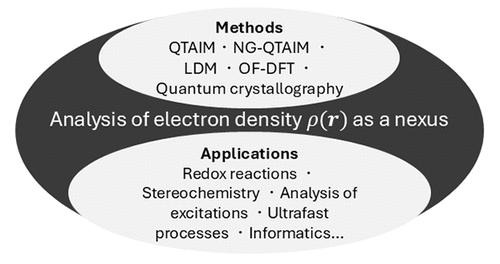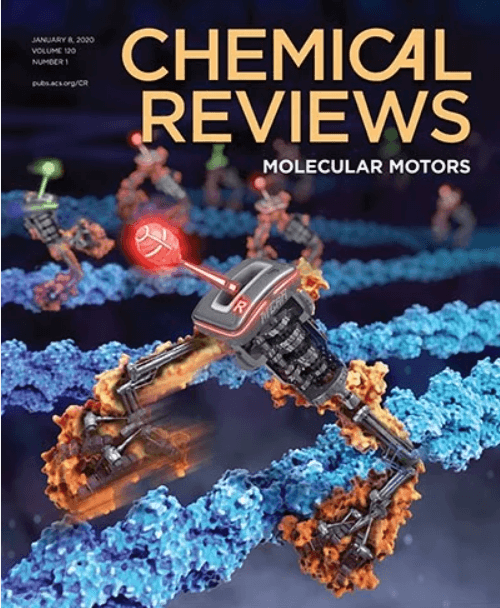电子密度分析:从基础知识到新兴应用
IF 51.4
1区 化学
Q1 CHEMISTRY, MULTIDISCIPLINARY
引用次数: 0
摘要
电子密度决定了原子核和电子系统的所有特性。它既可计算又可观测。电子密度的拓扑结构有助于深入了解成键机制和其他现象,是分子轨道图和形式氧化态(FOS)形式主义的补充和超越。在没有轨道的情况下,例如无轨道密度泛函理论 (OF-DFT),从电子密度中获得机理认识的能力也很重要。虽然基于密度拓扑的分析(如 QTAIM(分子中原子的量子理论))已被广泛使用,但最近又出现了基于矢量的新技术,如下一代(NG)QTAIM。基于机器学习(ML)的方法也在积极使用密度相关量,特别是用于 ML DFT 函数开发,包括机器学习动能函数。我们回顾了 QTAIM 及其最近的扩展,如 NG-QTAIM 和定位-非定位矩阵(LDM),以及它们在成键、构象、氧化还原反应激发机制和超快现象分析中的应用。我们回顾了最近的研究,这些研究表明直接密度分析可以规避 FOS 形式主义的某些缺陷,特别是在描述阴离子氧化还原和广泛使用的(球形)投影态密度分析时。我们讨论了基于密度的量在构建 DFT 函数中的应用,以及应用密度拓扑分析深入了解 OF-DFT 和最近开发的时间依赖性 OF-DFT 的机理的前景。本文章由计算机程序翻译,如有差异,请以英文原文为准。

The Analysis of Electron Densities: From Basics to Emergent Applications
The electron density determines all properties of a system of nuclei and electrons. It is both computable and observable. Its topology allows gaining insight into the mechanisms of bonding and other phenomena in a way that is complementary to and beyond that available from the molecular orbital picture and the formal oxidation state (FOS) formalism. The ability to derive mechanistic insight from electron density is also important with methods where orbitals are not available, such as orbital-free density functional theory (OF-DFT). While density topology-based analyses such as QTAIM (quantum theory of atoms-in-molecules) have been widely used, novel, vector-based techniques recently emerged such as next-generation (NG) QTAIM. Density-dependent quantities are also actively used in machine learning (ML)-based methods, in particular, for ML DFT functional development, including machine-learnt kinetic energy functionals. We review QTAIM and its recent extensions such as NG-QTAIM and localization-delocalization matrices (LDM) and their uses in the analysis of bonding, conformations, mechanisms of redox reactions excitations, as well as ultrafast phenomena. We review recent research showing that direct density analysis can circumvent certain pitfalls of the FOS formalism, in particular in the description of anionic redox, and of the widely used (spherically) projected density of states analysis. We discuss uses of density-based quantities for the construction of DFT functionals and prospects of applications of analyses of density topology to get mechanistic insight with OF-DFT and recently developed time-dependent OF-DFT.
求助全文
通过发布文献求助,成功后即可免费获取论文全文。
去求助
来源期刊

Chemical Reviews
化学-化学综合
CiteScore
106.00
自引率
1.10%
发文量
278
审稿时长
4.3 months
期刊介绍:
Chemical Reviews is a highly regarded and highest-ranked journal covering the general topic of chemistry. Its mission is to provide comprehensive, authoritative, critical, and readable reviews of important recent research in organic, inorganic, physical, analytical, theoretical, and biological chemistry.
Since 1985, Chemical Reviews has also published periodic thematic issues that focus on a single theme or direction of emerging research.
 求助内容:
求助内容: 应助结果提醒方式:
应助结果提醒方式:


